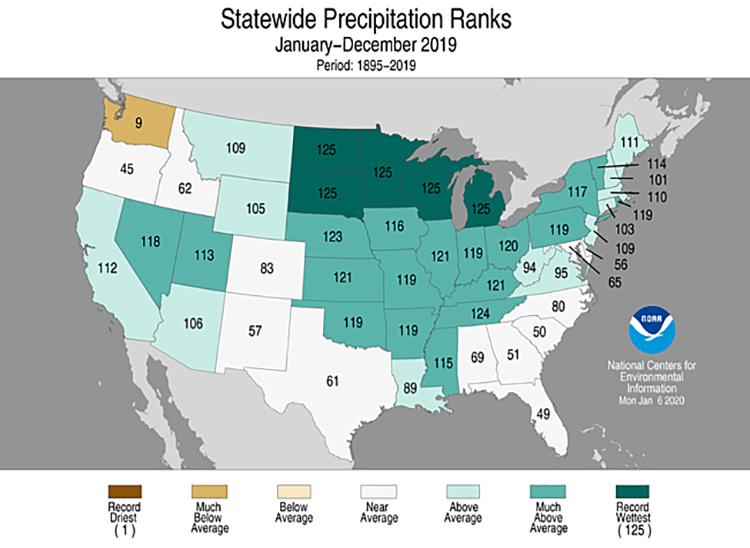
For many farmers, 2019 will be remembered as a constant battle.
- A battle to get crops planted in the field
- A battle to get crops out of the field
- And the ongoing battle to restore soil health following major soil compaction issues
Just how big were those battles?
Five states set rainfall records in data tracing back to 1895.
That’s according to the National Oceanic and Atmospheric Administration (NOAA) and its National Centers for Environmental Information.
In the rankings, states with high numbers indicate record wet conditions. The highest achievable number is 125 . . . signifying a record.
If you were located in the Ohio, Mississippi, or Missouri River regions, your state most likely experienced a top 10 rainfall event.
State ranks
Wettest year on record — Michigan, Minnesota, North and South Dakota, and Wisconsin
Second wettest year — Tennessee
Third wettest year — Nebraska
Fifth wettest year — Illinois, Kansas, and Kentucky
Sixth wettest year — Ohio
Seventh wettest year — Arkansas, Indiana, Missouri, Oklahoma, Pennsylvania, and Rhode Island
Eighth wettest year — Nevada
Ninth wettest year — New York
Tenth wettest year — Iowa
The wettest of the wet . . . Wisconsin, Michigan, and Minnesota . . . rank second, sixth, and seventh, respectively, for milk production.
Smallest drought footprint
While 2019 was just 0.18 of an inch short of a national record, the country did experience the smallest drought footprint dating back to 1895.
As for the rainfall record?
That took place in 1973.








